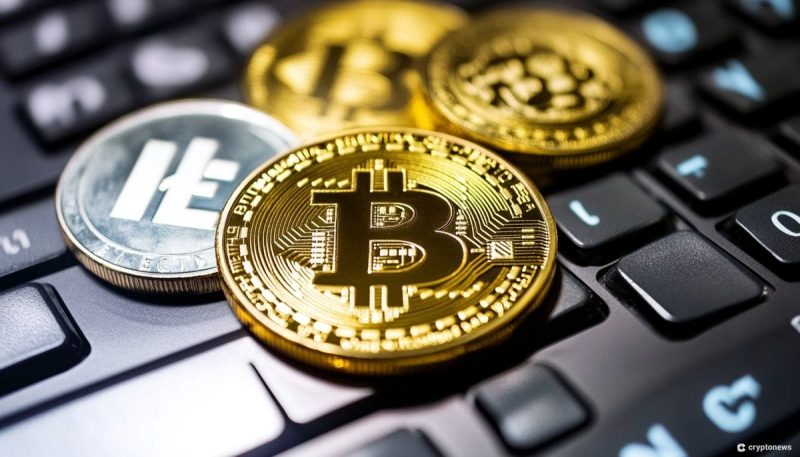A prominent finance and economics-focused think tank in South Korea has has raised concerns regarding the approval of spot crypto ETFs (exchange-traded funds) in the country.
The Korea Institute of Finance, through researcher Bo-mi Lee, has argued that the potential risks associated with these financial products may far outweigh their benefits.
This has sparked a debate on the implications of crypto ETFs on global financial markets, particularly focusing on market volatility, resource allocation, and liquidity.
Crypto ETFs in the Context of Global Financial Market
Spot crypto ETFs might have significant ramifications for global financial markets, particularly in the long run.
These products, which allow investors to gain exposure to cryptocurrencies like Bitcoin and Ethereum without owning the underlying assets, have been lauded for potentially increasing market accessibility and liquidity.
However, they also come with a set of risks that could disrupt the stability of financial systems worldwide.
The ability of spot ETFs to attract substantial capital into the crypto market, especially during periods of rising prices, raises questions about their overall impact on financial stability.
In fact, investors showed remarkable interest in the launch of spot Bitcoin ETFs, resulting in inflows surpassing $20 billion within the first several weeks of trading.
This massive influx of capital, averaging over $500 million per day (equivalent to roughly 10,000 BTC), even exceeded the daily production of Bitcoin, which is approximately 1,800 BTC.
Furthermore, these funds might not offer the same investor protection standards as other ETFs since they are subject to looser controls around their fees and conflicts of interest.
Even SEC Chair Gary Gensler, who voted in favor of spot Bitcoin ETFs, said the agency’s product approvals were not an endorsement of Bitcoin.
He called the cryptocurrency “primarily a speculative, volatile asset that’s also used for illicit activity including ransomware, money laundering, sanction evasion and terrorist financing.”
Enhanced Market Volatility
One of the primary concerns linked to spot crypto ETFs is that they could amplify market volatility.
Cryptocurrencies are already known for their price swings, and adding ETFs into the mix could exacerbate these fluctuations.
As these ETFs attract more investors, the inflow and outflow of capital could lead to sharp price movements.
During periods of market euphoria, this could result in significant capital being funneled into the crypto market, potentially leading to bubbles.
Conversely, during downturns, the rapid withdrawal of funds could trigger sharp declines, increasing overall market instability.
However, according to data analysis firm Bauer, Bitcoin volatility has been consistently declining over the past years.
Per the firm, volatility, as measured by the 100-day average of daily price swings in percentage points, hasn’t exceeded 4.5% since the introduction of Bitcoin futures.
The firm expects this volatility to further decline after the introduction of spot Bitcoin ETFs.
Distortions in Resource Allocation and Liquidity
Another notable issue is the potential distortions in resource allocation and liquidity during market fluctuations.
As substantial capital flows into the crypto market through ETFs, it could lead to inefficiencies in how resources are distributed across the financial system.
Financial institutions might allocate more resources towards crypto assets at the expense of other sectors, leading to imbalances.
Moreover, the liquidity of financial markets could be adversely affected.
This is specifically important as, in the United States, the Fed’s ongoing QT and high Treasury issuance might already lead to a significant reduction in liquidity.
The Fed is currently reducing its balance sheet by letting $95 billion per month roll off, which decreases the amount of idle cash in the market.
The decrease in reverse repurchase agreement (repo) balances is expected to hit zero by Q3 2024, leading to more pressure on bank reserves and potentially causing liquidity stress in the financial system.
Systematic Risk
Crypto ETFs could also introduce systemic risks to the broader financial system.
These funds would link traditional financial markets more closely with the crypto market.
This interconnectedness means that significant disruptions or failures in the crypto market could have a ripple effect on the broader financial system, affecting other asset classes and financial institutions.
While ETFs are designed to be liquid, during periods of market stress, liquidity can dry up.
If many investors attempt to sell their Crypto ETF shares simultaneously, it could lead to liquidity shortages.
Need for Robust Regulatory Frameworks
To mitigate the risks associated with crypto assets and their underlying ETFs, robust regulatory frameworks are crucial.
These frameworks should aim to protect investors and ensure the stability of financial markets.
In 2022, the White House released the first-ever comprehensive framework for the responsible development of digital assets.
The framework pushed for action from existing regulators such as the Securities and Exchange Commission and the Commodity Futures Trading Commission (CFTC).
However, the President has limited power in these matters, and the guidelines are only recommendations.
The guidelines advocated for customer protection, fostering financial stability, as well as advancing responsible innovation.
However, following the collapse of cryptocurrency exchange FTX and other high-profile bankruptcies in the industry like BlockFi, the U.S. regulatory agencies started to take a more hostile approach.
Specifically, the CFTC and especially the SEC launched an aggressive crackdown on the crypto industry.
More recently, President Joe Biden vetoed a congressional resolution that would strike down the SEC guidance that the crypto industry says has stymied its ability to work with banks.
The decision to veto the resolution sparked frustration within the crypto community, with some rising concerns about stifling innovation and impeding industry growth.
Biden vetoes the resolution to nullify SAB 121.
Process? Who cares.
Consumer protection? No thanks.
Appeasing Gensler’s crypto vendetta? Sure thing.
This is a slap in the face to innovation and financial freedom. #Crypto #Fail pic.twitter.com/4QPhKkhN4r
— Cody Carbone (@CodyCarboneDC) May 31, 2024
South Korea’s Financial Landscape
In the context of South Korea, the concerns regarding the introduction of spot crypto ETFs are particularly pronounced.
The country’s financial regulator has already taken steps to tighten rules on crypto assets to protect users.
Starting July 19, registered crypto exchanges will be required to evaluate the tokens listed on their platforms.
The new regulation demands that crypto exchanges within the country comply with basic rules for token listing and that existing ones be reassessed every six months.
They must also conduct reliability tests on the issuing entity, security standards, and regulatory compliance of these crypto coins.
The country has also warned that platforms that fail to comply with the new development will face penalties, which could be a minimum of one year of jail term or fines.
Impact of Spot Crypto ETFs on South Korea’s Financial Stability
The introduction of spot crypto ETFs in South Korea could impact the country’s financial stability, particularly since the country is a major player in the crypto world.
In the first quarter of the year, the South Korean won emerged as the leading fiat currency for cryptocurrency trading, overtaking the US dollar.
The currency accounted for more than $456 billion in trading volume on centralized crypto exchanges, surpassing the $455 billion volume in US dollars.
Likewise, a recent survey has revealed that most young South Koreans are losing faith in the national pension system, with many stating they see crypto and stocks as a better alternative.
The study found that more than three-quarters of people aged 20-39 “don’t trust” state-issued pensions.
Over half of respondents who said they were making their own pension plans claimed they were building their retirement funds with stocks and crypto.
Given the huge demand for cryptocurrencies in South Korea, spot crypto ETFs in the country might also see a significant amount of capital flow, Lee said in the report.
He argued that this would result in inefficiencies in resource allocation, adding that financial market liquidity and financial companies’ health will worsen when prices go down.
Therefore, the researcher said that the country must do more research into the potential losses and benefits of introducing spot crypto ETFs.
Currently, the researcher argues that the losses will be greater than the benefits that could be gained.
The Bottom Line
The Korea Institute of Finance’s report on the potential risks of spot crypto ETFs highlights the need for caution and thorough consideration.
While these financial products offer certain benefits, the potential risks to financial stability, market volatility, and resource allocation cannot be ignored.
The research highlighted the need for comprehensive research and robust regulatory frameworks to ensure that the introduction of crypto ETFs does not lead to unintended consequences.
The post Are Crypto ETFs Dangerous for Financial Markets? appeared first on Cryptonews.


